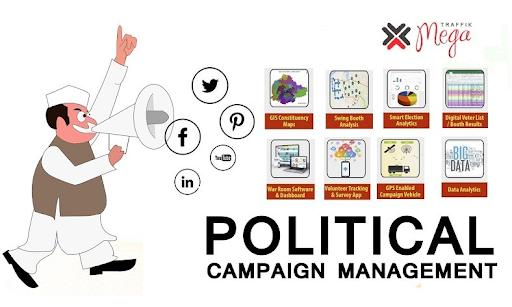As India has one of the largest populations in the world, it is no surprise that political campaigns are a major aspect of society. With the rise of technology and social media, there has been a significant shift towards digital media in political campaigning. However, traditional media still plays a vital role in shaping public opinion and influencing voters. In this article, we will explore the roles of both traditional and digital media in Indian political campaigns and their impact on elections.
Traditional Media: Print, Television, and Radio
Traditional media includes print newspapers, television news channels, and radio broadcasts. These forms of media have been around for decades and have played an important role in shaping public opinion about politics. They provide a platform for political parties and candidates to reach out to the masses and convey their message.
Print media, such as newspapers, have a wide readership in India. They are often seen as a reliable source of information for people who do not have access to digital media. Political parties use print media to publish advertisements, interviews, and editorials to promote their agenda and attract voters.
Television news channels are another significant player in Indian politics. With 24-hour coverage and live debates, they have become the primary source of political news for many people. During election season, these channels play a crucial role in shaping public opinion through their coverage of rallies, speeches, and interviews with candidates.
Radio broadcasts may not have the same reach as print or television, but they still hold a strong influence in rural areas where access to digital media is limited. Political parties often use radio to broadcast speeches and promote their campaigns.
Overall, traditional media has a more significant impact on older generations and those living in rural areas. It provides a sense of credibility and reliability that digital media may lack for some people. However, with the rise of technology and social media, there has been a shift towards using digital platforms for political campaigns.
Digital Media: Social Media and Online Campaigning
The advent of social media has revolutionized the way political campaigns are conducted in India. With over 400 million active users on various platforms such as Facebook, Twitter, and Instagram, social media has become a powerful tool for political parties to reach out to voters.
One of the key advantages of using social media in political campaigning is its ability to target specific demographics. Political parties can tailor their messages and advertisements to reach out to specific groups of voters based on factors such as age, location, and interests. This targeted approach has proven to be highly effective in gaining support from young voters who are more active on social media. These targeted campaigns is handled by political marketing service provider in India.
Furthermore, social media allows for real-time interaction with voters through live streams, Q&A sessions, and comments sections. This level of engagement was not possible with traditional media and allows for direct communication between candidates and their supporters.
Online campaigning has also become a popular tactic used by political parties in recent years. Through websites, blogs, and email campaigns, they can share their agenda and gather support from online followers. This approach is especially successful in urban areas where access to digital media is more prevalent.
However, one of the downsides of digital media is the spread of misinformation and fake news. With the ability for anyone to share information online, it becomes challenging to verify its authenticity. This can lead to confusion among voters and potentially sway their opinions based on false information.
Impact on Elections
Both traditional and digital media have a significant impact on Indian elections. Traditional media reaches out to a broader audience but may not have as much influence on younger generations. Digital media, on the other hand, has a more targeted approach and can sway the opinions of younger voters who are more active on social media.
In recent years, we have seen a shift towards digital media being used more prominently in political campaigns. This is due to its cost-effectiveness, ability to reach out to specific demographics, and real-time engagement with voters. However, traditional media still holds its ground as a reliable source of information for many people.
In terms of election results, it is difficult to determine which form of media has a greater impact. It ultimately depends on the specific region and demographics of voters. In urban areas where access to digital media is prevalent, it may have a more significant influence. But in rural areas, traditional media may still hold more sway.
One of the most significant impacts of media on elections is the dissemination of information. With the rise of fake news and misinformation, it has become increasingly challenging to discern what is true and what is not. This can lead to confusion and manipulation of voters’ opinions.
Moreover, media coverage can also impact voter turnout. Extensive coverage by traditional or digital media may sway people’s decisions about whether or not to vote. On one hand, positive coverage of a candidate may encourage people to vote for them, while negative coverage may discourage them from participating in the election altogether.
Finally, media plays a crucial role in shaping public discourse and influencing political debates. It provides a platform for candidates to share their ideologies and policies, and for citizens to engage in political discussions. This can greatly impact the outcome of an election.
